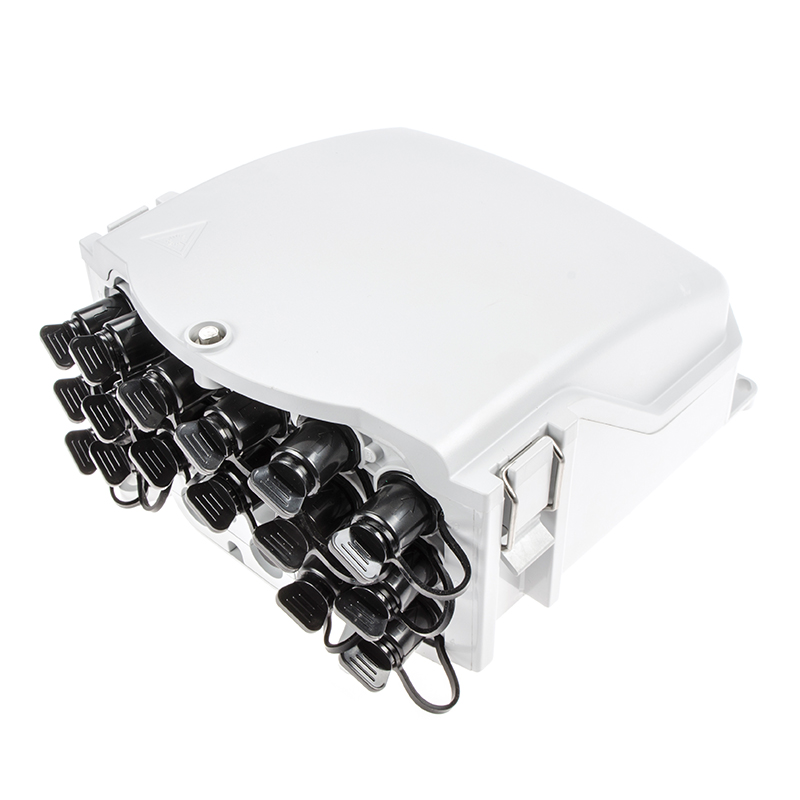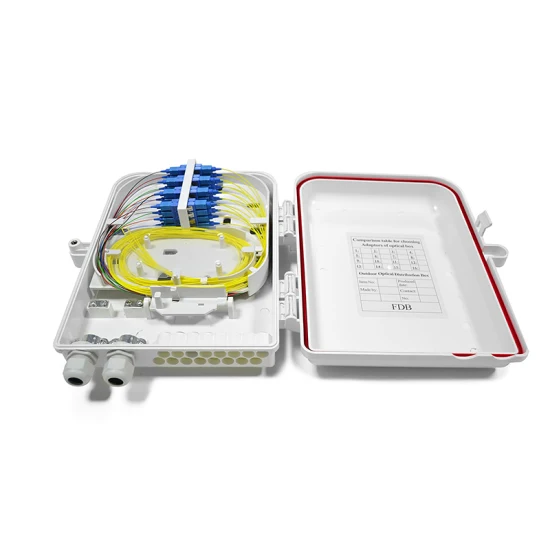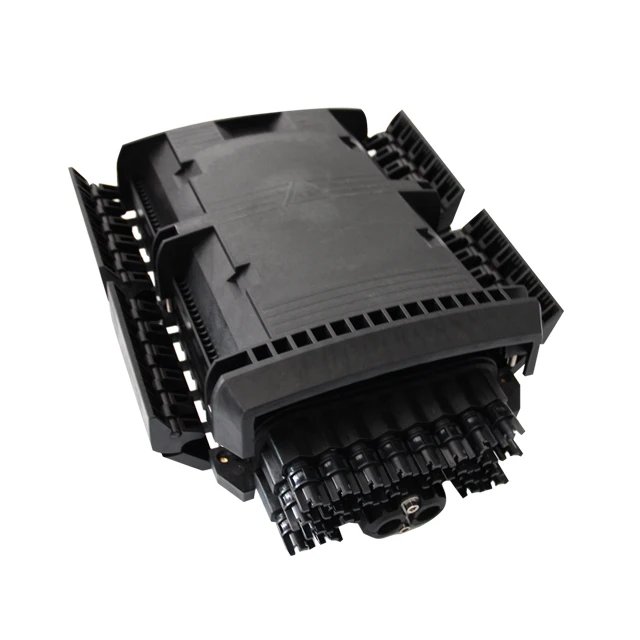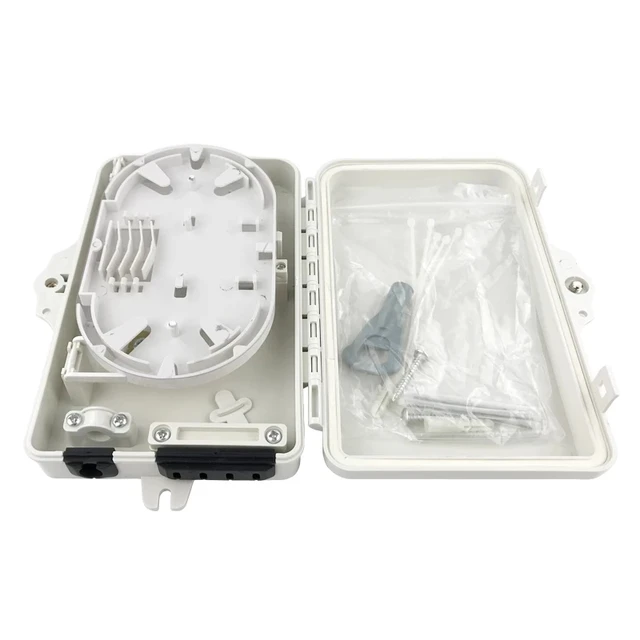Choosing the Right Fiber Optic Distribution Box for Your Needs

Fiber optic distribution boxes, essential in telecommunications, play a crucial role in network infrastructure. These IP68Waterproof distribution boxes protect fiber optic cables from physical damage, dust, and moisture. With a variety of options available, including those with fastconnecto and hardenadapter features, selecting the right distribution box ensures network stability and longevity. This blog aims to guide readers in making an informed decision.
Understanding Fiber Optic Distribution Boxes
What is a Fiber Optic Distribution Box?
Definition and basic function
A fiber optic distribution box serves as a critical component in telecommunications networks. This equipment organizes and protects fiber optic cables at network terminals or relay points. The primary function involves managing the arrangement, splicing, and access of fiber optic cables. Proper use of a distribution box ensures network stability and longevity.
Key components and their roles
The key components of a distribution box include the outer sheath, reinforcing core, ground wire protection parts, and optical fibers. The outer sheath and reinforcing core provide mechanical support and protection. Ground wire protection parts safeguard against electrical faults. Optical fibers facilitate data transmission. Each component plays a vital role in maintaining the integrity and performance of the network.
Types of Fiber Optic Distribution Boxes
Wall-mounted vs. Rack-mounted
Wall-mounted distribution boxes offer a space-saving solution for smaller installations. These boxes attach directly to walls, making them suitable for areas with limited floor space. Rack-mounted distribution boxes, on the other hand, integrate into standard server racks. This type provides a scalable option for larger network setups. Both types ensure organized cable management and easy access for maintenance.
Indoor vs. Outdoor
Indoor distribution boxes protect fiber optic cables within controlled environments. These boxes typically feature materials that resist dust and physical damage. Outdoor distribution boxes, however, require more robust construction. These boxes often include IP68 waterproof ratings to withstand harsh weather conditions. Selecting the appropriate type depends on the installation environment and specific network requirements.
Splitter vs. Splice vs. Patch Panel
Splitter distribution boxes divide a single fiber optic signal into multiple outputs. This type suits applications requiring signal distribution to various endpoints. Splice distribution boxes join two fiber optic cables together. These boxes store excess fiber and protect spliced joints. Patch panel distribution boxes provide a centralized point for connecting and managing multiple fiber optic cables. Each type offers unique benefits based on the network's needs.

Key Features to Consider
Capacity and Scalability
Number of ports and fibers
Selecting a fiber optic distribution box with the right number of ports and fibers is crucial. The number of ports determines how many connections the box can handle. More ports allow for greater connectivity and flexibility. Fiber count impacts data transmission capacity. Higher fiber counts support more extensive networks. Evaluate current network needs and future expansion plans to choose an appropriate box.
Future-proofing your network
Future-proofing ensures that the distribution box can accommodate network growth. Opt for boxes with scalable options. Modular designs allow for easy upgrades. Consider boxes that support high-density optical fiber wiring. This feature enables efficient use of space and resources. Investing in a scalable box saves costs in the long run.
Durability and Protection
Material and build quality
Material and build quality significantly impact the durability of a distribution box. High-quality materials resist wear and tear. Look for boxes made from robust plastics or metals. These materials offer better protection against physical damage. Reinforced structures provide additional strength. A well-built box ensures longevity and reliability.
Environmental resistance (e.g., IP68 Waterproof)
Environmental resistance is essential, especially for outdoor installations. Boxes with IP68Waterproof ratings offer superior protection. These boxes withstand harsh weather conditions. Dust and moisture resistance prevent damage to fiber optic cables. Choose boxes with environmental seals and protective coatings. This feature ensures the box performs well in various conditions.
Ease of Installation and Maintenance
Accessibility and design
Accessibility and design affect the ease of installation and maintenance. User-friendly designs simplify setup processes. Clear labeling and organized layouts facilitate quick installations. Accessible components make maintenance tasks easier. Boxes with hinged doors or removable panels provide better access. Efficient designs reduce downtime and improve serviceability.
Cable management features
Proper cable management minimizes the risk of damage. Look for boxes with integrated cable management features. These features include cable trays, guides, and clips. Organized cables ensure stable network performance. Effective management prevents tangling and signal interference. Investing in good cable management enhances overall network reliability.
Practical Guides for Selection
Assessing Your Network Requirements
Current and future bandwidth needs
Evaluate the current bandwidth needs of your network. Consider the number of devices and the type of data being transmitted. High-definition video streaming and large file transfers demand higher bandwidth. Plan for future growth to avoid frequent upgrades. Anticipate increased data traffic and additional devices. Choose a fiber optic distribution box that can handle these requirements.
Specific application scenarios
Identify the specific application scenarios for your network. Different environments have unique demands. Data centers require high-density solutions. Residential areas need compact and efficient boxes. Industrial settings demand robust and durable options. Match the distribution box features to the application scenario. Ensure the box meets the environmental and operational needs of the network.

Budget Considerations
Balancing cost and quality
Balancing cost and quality is crucial when selecting a distribution box. Low-cost options may compromise durability and performance. High-quality materials and construction ensure longevity. Invest in a box that offers good value for money. Consider the total cost of ownership, including maintenance and potential replacements. A well-built box reduces long-term expenses.
Long-term investment vs. short-term savings
Consider the benefits of a long-term investment over short-term savings. A higher initial cost can lead to reduced maintenance and replacement expenses. Durable and scalable boxes support future network expansion. Avoid frequent upgrades by choosing a future-proof solution. Investing in a reliable distribution box ensures network stability and longevity.
Vendor and Product Reviews
Researching reputable brands
Research reputable brands in the telecommunications industry. Established brands offer proven reliability and quality. Look for manufacturers with a track record of innovation and customer satisfaction. Reputable brands provide better warranties and support services. Investing in a trusted brand ensures peace of mind and product reliability.
Reading customer reviews and testimonials
Read customer reviews and testimonials to gather insights. Real-world experiences highlight the strengths and weaknesses of a product. Positive reviews indicate reliability and performance. Negative reviews reveal potential issues and limitations. Use this information to make an informed decision. Customer feedback provides valuable perspectives on product suitability.
Best Practices and Future Trends
Installation Best Practices
Professional vs. DIY installation
Choosing between professional and DIY installation impacts the network's performance and reliability. Professional installation ensures adherence to industry standards. Experts handle complex tasks, reducing the risk of errors. Professional services offer warranties and support, providing peace of mind. DIY installation may save costs initially. However, improper setup can lead to network issues. Evaluate the network's complexity before deciding. For critical installations, professional services are recommended.
Common pitfalls to avoid
Avoiding common pitfalls during installation enhances network stability. Incorrect cable management can cause signal interference. Ensure proper routing and securing of cables. Overlooking environmental factors can lead to damage. Use appropriate enclosures for outdoor installations. Neglecting to label cables complicates maintenance. Clear labeling facilitates troubleshooting. Skipping regular inspections increases the risk of undetected issues. Schedule periodic checks to maintain optimal performance.
Maintenance Tips
Regular inspection and cleaning
Regular inspection and cleaning extend the lifespan of fiber optic distribution boxes. Inspect cables for signs of wear or damage. Replace damaged cables promptly to prevent network disruptions. Clean connectors and ports to ensure optimal signal transmission. Use appropriate cleaning tools and solutions. Avoid using excessive force to prevent damage. Schedule inspections and cleanings at regular intervals. Consistent maintenance reduces the risk of unexpected failures.
Troubleshooting common issues
Effective troubleshooting minimizes downtime. Identify common issues such as signal loss or connection problems. Check for loose or damaged cables first. Verify that connectors are properly seated. Inspect the distribution box for signs of physical damage. Use diagnostic tools to pinpoint issues. Address problems promptly to restore network functionality. Keep spare parts on hand for quick repairs. Regular training for maintenance personnel improves troubleshooting efficiency.

Emerging Trends in Fiber Optic Technology
Advances in fiber optic distribution
Advances in fiber optic distribution enhance network capabilities. New materials improve durability and performance. Innovations in connector technology simplify installations. High-density solutions optimize space usage. Modular designs offer scalability and flexibility. These advancements support growing data demands. Investing in the latest technology ensures future readiness. Stay informed about industry developments to make informed decisions.
Impact of 5G and IoT on fiber optic networks
The rise of 5G and IoT significantly impacts fiber optic networks. 5G technology requires high-speed, low-latency connections. Fiber optic networks provide the necessary infrastructure. IoT devices generate massive amounts of data. Efficient data transmission relies on robust fiber optic networks. Upgrading to advanced distribution boxes supports these technologies. Future-proofing the network ensures compatibility with emerging trends. Embrace innovations to stay competitive in the evolving landscape.
Choosing the right fiber optic distribution box involves several key considerations. Evaluating network requirements, future-proofing capabilities, and environmental resistance ensures a suitable choice. High-quality materials and robust construction enhance durability and longevity. Proper cable management features simplify installation and maintenance.
Carefully assess specific needs before making a decision. Investing in the right distribution box guarantees network stability and efficiency. Selecting an appropriate box supports long-term network performance and reliability.
See Also
Discover the Fascinating World of ADSS Fiber Cable: Everything You Need to Know
Boost Your Fiber Network: Top Strategies for ONU Performance Optimization
Inside the Future of Network Infrastructure: MPO Jumpers Unveiled
Discovering the Heart of ADSS Fiber Cable: Reliability, Efficiency, and Innovation
About US
Follow Us
AnetFiber company's main products are indoor and outdoor optical fiber cables, outdoor waterproof pre-connected fiber-to-the-home products, PLC optical fiber splitters, optical fiber jumpers and pigtails, MTP®/MPO high-density big data product solutions, optical fiber field quick connectors and research and development molding, injection molding and production of optical fiber distribution boxes, optical fiber chassis cabinets, the market has expanded to the world, Europe, America, Asia, the Middle East and Latin America.
Address
Shenzhen City, Baoan District, Yanluo Street, Tangxiayong Community, Yangyong Industrial Road, Tonggangda New Energy Vehicle Park 406
Contacts
+86 199 2655 3586

